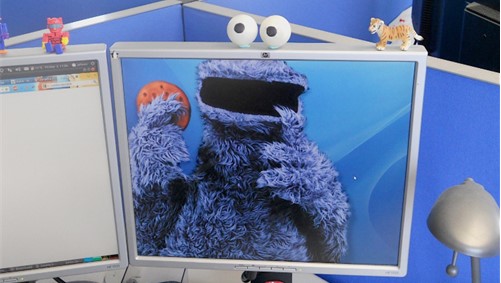Digerati Technologies Provides Update on its SkyNet and NextLevel Internet Acquisitions
Research, News, and Market Data on Digerati Technologies
SAN ANTONIO, July 19, 2022 (GLOBE NEWSWIRE) — Digerati Technologies, Inc. (OTCQB: DTGI) (“Digerati” or the “Company”), a provider of cloud services specializing in UCaaS (Unified Communications as a Service) solutions for the small to medium-sized business (“SMB”) market, is pleased to provide an update on the integration of its SkyNet and NextLevel Internet acquisitions that were closed in December 2021 and February 2022 and contributed to the Company’s highest quarterly revenue in its history.
The Company is approximately six months into its integration playbook that has resulted in the following:
- Appointment of Patti Cuthill from NextLevel Internet as VP of People and Culture for the entire organization.
- Appointment of George Robyn from NextLevel Internet as VP of Engineering and DevOps for the entire organization.
- Armando Muniz, who joined the Company via the acquisition of ActivePBX in November 2020, was appointed Director of Voice Engineering for the entire organization.
- Other re-alignments throughout the organization to gain efficiencies and maximize team productivity.
- Annualized cost synergies of approximately $500K that are expected to continue contributing to OPCO EBITDA in the coming quarters.
The Company and its subsidiaries now serve over 4,000 business customers and approximately 45,000 users, with a run-rate of over $32 million in annual revenue.
As previously highlighted, some of the operating efficiencies, expected cost synergies and consolidation savings from the SkyNet and NextLevel acquisitions were realized over several months following the closing of the transactions. As a result, all of Digerati’s financial measures have steadily improved over the past several months which contributed to an increase in gross margin to 61.3% and improvement in non-GAAP operating EBITDA (OPCO EBITDA) to $0.969 million for the three months ended April 30, 2022. The Company continues to execute on its integration playbook and expects additional cost synergies over the next two to three quarters.
In addition, NextLevel was recently awarded and certified a Great Place to Work for the third year in a row. The prestigious award is based entirely on what current employees say about their experience working at NextLevel. This year, 97% of NextLevel’s employees said it is a great place to work, compared to the national average of 53%.
Arthur L. Smith, Chief Executive Officer of Digerati, commented, “We are pleased with the progress on integration of both SkyNet and NextLevel since the closing of both acquisitions earlier in FY 2022. Our emphasis on the UCaaS/Cloud Communications business, which operates in a segment of the telecommunications industry that continues to experience solid growth as businesses migrate from legacy phone systems to cloud-based telephony systems, has proven to be a solid strategy. We also continue to prove that the M&A aspect of our business model works while increasing penetration in Texas and expanding west into California.”
Mr. Smith added, “I commend our team on successful execution of our integration playbook while achieving financial results that demonstrated improved margins at every operating level and a boost to our profitability.”
Recap of previously reported third quarter ended April 30, 2022:
- Revenue increased by 118% to $8.163 million compared to $3.751 million for Q3 FY2021.
- Gross profit increased 125% to $5.002 million compared to $2.225 million for Q3 FY2021.
- Gross margin increased to 61.3% compared to 59.3% for Q3 FY2021.
- Non-GAAP Adjusted EBITDA income was $0.557 million, excluding all non-cash items and one-time transactional expenses, compared to Adjusted EBITDA income of $0.321 million for Q3 FY2021.
- Non-GAAP operating EBITDA (OPCO EBITDA) improved to income of $0.969 million, excluding corporate expenses, all non-cash items, and one-time transactional expenses, compared to a non-GAAP operating EBITDA of $0.619 million for Q3 FY2022.
Digerati expects to report its fourth quarter and fiscal year end July 31, 2022, operating and financial results the week of October 24, 2022.
Use of Non-GAAP Financial Measurements
The Company believes that EBITDA (earnings before interest, taxes, depreciation and amortization) is useful to investors because it is commonly used in the cloud communications industry to evaluate companies on the basis of operating performance and leverage. Adjusted EBITDA provides an adjusted view of EBITDA that takes into account certain significant non-recurring transactions, if any, such as impairment losses and expenses associated with pending acquisitions, which vary significantly between periods and are not recurring in nature, as well as certain recurring non-cash charges such as changes in fair value of the Company’s derivative liabilities and stock-based compensation. The Company also believes that Adjusted EBITDA provides investors with a measure of the Company’s operational and financial progress that corresponds with the measurements used by management as a basis for allocating resources and making other operating decisions. Although the Company uses Adjusted EBITDA as one of several financial measures to assess its operating performance, its use is limited as it excludes certain significant operating expenses. Non-GAAP operating EBITDA (OPCO EBITDA) is useful to investors because it reflects EBITDA for the core operation of the business excluding corporate expenses, non-cash expenses and transactional expenses. EBITDA, Adjusted EBITDA, and Non-GAAP operating EBITDA are not intended to represent cash flows for the periods presented, nor have they been presented as an alternative to operating income or as an indicator of operating performance and should not be considered in isolation or as a substitute for measures of performance prepared in accordance with accounting principles generally accepted in the United States of America (“GAAP”). In accordance with SEC Regulation G, the non-GAAP measurements in this press release have been reconciled to the nearest GAAP measurement, which can be viewed under the heading “Reconciliation of Net Loss to Adjusted EBITDA” in the financial table included in this press release.
About Digerati Technologies, Inc.
Digerati Technologies, Inc. (OTCQB: DTGI) is a provider of cloud services specializing in UCaaS (Unified Communications as a Service) solutions for the business market. Through its operating subsidiaries NextLevel Internet (NextLevelinternet.com) T3 Communications (T3com.com), Nexogy (Nexogy.com), and SkyNet Telecom (Skynettelecom.net), the Company is meeting the global needs of small businesses seeking simple, flexible, reliable, and cost-effective communication and network solutions including, cloud PBX, cloud telephony, cloud WAN, cloud call center, cloud mobile, and the delivery of digital oxygen on its broadband network. The Company has developed a robust integration platform to fuel mergers and acquisitions in a highly fragmented market as it delivers business solutions on its carrier-grade network and Only in the Cloud™. For more information, please visit www.digerati-inc.com and follow DTGI on LinkedIn, Twitter and Facebook.
Forward-Looking Statements
The information in this news release includes certain forward-looking statements that are based upon assumptions that in the future may prove not to have been accurate and are subject to significant risks and uncertainties, including statements related to the future financial performance of the Company. Although the Company believes that the expectations reflected in the forward-looking statements such as annualized cost synergies of approximately $500K that are expected to continue contributing to OPCO EBITDA in the coming quarters and the Company expects additional cost synergies over the next 2-3 quarters, are reasonable, it can give no assurance that such expectations or any of its forward-looking statements will prove to be correct. Factors that could cause results to differ include, but are not limited to, successful execution of growth strategies, product development and acceptance, the impact of competitive services and pricing, general economic conditions, and other risks and uncertainties described in the Company’s periodic filings with the Securities and Exchange Commission.
|
Facebook: Digerati Technologies, Inc. |
|
Twitter: @DIGERATI_IR |
Investors:
The Eversull Group
Jack Eversull
jack@theeversullgroup.com
(972) 571-1624
ClearThink
Brian Loper
bloper@clearthink.capital
(347) 413-4234
|
Reconciliation |
|
||||||||||||||||||
|
DIGERATI TECHNOLOGIES, INC. AND SUBSIDIARIES |
|||||||||||||||||||
|
CONSOLIDATED STATEMENTS OF OPERATIONS |
|||||||||||||||||||
|
(In thousands, except per share amounts, unaudited) |
|||||||||||||||||||
|
|
|
Three months ended April 30, |
|
Nine months ended April 30, |
|
||||||||||||||
|
|
|
|
2022 |
|
|
|
2021 |
|
|
|
2022 |
|
|
|
2021 |
|
|
||
|
OPERATING REVENUES: |
|
|
|
|
|
|
|
|
|
||||||||||
|
Cloud software and service revenue |
|
$ |
8,163 |
|
|
$ |
3,751 |
|
|
$ |
15,959 |
|
|
$ |
8,629 |
|
|
||
|
|
|
|
|
|
|
|
|
|
|
||||||||||
|
Total operating revenues |
|
|
8,163 |
|
|
|
3,751 |
|
|
|
15,959 |
|
|
|
8,629 |
|
|
||
|
|
|
|
|
|
|
|
|
|
|
||||||||||
|
OPERATING EXPENSES: |
|
|
|
|
|
|
|
|
|
||||||||||
|
Cost of services (exclusive of depreciation and amortization) |
|
|
3,161 |
|
|
|
1,526 |
|
|
|
6,203 |
|
|
|
3,708 |
|
|
||
|
Selling, general and administrative expense |
|
|
4,296 |
|
|
|
1,993 |
|
|
|
8,211 |
|
|
|
4,969 |
|
|
||
|
Legal and professional fees |
|
|
756 |
|
|
|
204 |
|
|
|
2,505 |
|
|
|
717 |
|
|
||
|
Bad debt |
|
|
36 |
|
|
|
5 |
|
|
|
51 |
|
|
|
9 |
|
|
||
|
Depreciation and amortization expense |
|
|
1,540 |
|
|
|
611 |
|
|
|
2,514 |
|
|
|
1,204 |
|
|
||
|
Total operating expenses |
|
|
9,789 |
|
|
|
4,339 |
|
|
|
19,484 |
|
|
|
10,607 |
|
|
||
|
|
|
|
|
|
|
|
|
|
|
||||||||||
|
OPERATING LOSS |
|
|
(1,626 |
) |
|
|
(588 |
) |
|
|
(3,525 |
) |
|
|
(1,978 |
) |
|
||
|
|
|
|
|
|
|
|
|
|
|
||||||||||
|
OTHER INCOME (EXPENSE): |
|
|
|
|
|
|
|
|
|
||||||||||
|
Gain (loss) on derivative instruments |
|
|
6,827 |
|
|
|
(10,878 |
) |
|
|
7,835 |
|
|
|
(10,860 |
) |
|
||
|
Loss on extinguishment of debt |
|
|
– |
|
|
|
– |
|
|
|
(5,480 |
) |
|
|
– |
|
|
||
|
Gain on settlement of debt |
|
|
– |
|
|
|
150 |
|
|
|
– |
|
|
|
347 |
|
|
||
|
Income tax benefit (expense) |
|
|
(167 |
) |
|
|
(63 |
) |
|
|
(285 |
) |
|
|
(122 |
) |
|
||
|
Other income (expense) |
|
|
2 |
|
|
|
– |
|
|
|
– |
|
|
|
– |
|
|
||
|
Interest expense |
|
|
(1,676 |
) |
|
|
(1,577 |
) |
|
|
(4,563 |
) |
|
|
(3,079 |
) |
|
||
|
Total other income (expense) |
|
|
4,986 |
|
|
|
(12,368 |
) |
|
|
(2,493 |
) |
|
|
(13,714 |
) |
|
||
|
|
|
|
|
|
|
|
|
|
|
||||||||||
|
NET INCOME (LOSS) INCLUDING NONCONTROLLING INTEREST |
|
3,360 |
|
|
|
(12,956 |
) |
|
|
(6,018 |
) |
|
|
(15,692 |
) |
|
|||
|
|
|
|
|
|
|
|
|
|
|
||||||||||
|
Less: Net loss attributable to the noncontrolling interests |
|
|
546 |
|
|
|
158 |
|
|
|
1,306 |
|
|
|
223 |
|
|
||
|
|
|
|
|
|
|
|
|
|
|
||||||||||
|
NET INCOME (LOSS) ATTRIBUTABLE TO DIGERATI’S SHAREHOLDERS |
|
|
3,906 |
|
|
|
(12,798 |
) |
|
|
(4,712 |
) |
|
|
(15,469 |
) |
|
||
|
|
|
|
|
|
|
|
|
|
|
||||||||||
|
Deemed dividend on Series A Convertible preferred stock |
|
|
(4 |
) |
|
|
(5 |
) |
|
|
(14 |
) |
|
|
(15 |
) |
|
||
|
|
|
|
|
|
|
|
|
|
|
||||||||||
|
NET INCOME (LOSS) ATTRIBUTABLE TO DIGERATI’S COMMON SHAREHOLDERS |
|
$ |
3,902 |
|
|
|
$ |
(12,803 |
) |
|
$ |
(4,726 |
) |
|
|
$ |
(15,484 |
) |
|
|
|
|
|
|
|
|
|
|
|
|
||||||||||
|
INCOME (LOSS) PER COMMON SHARE – BASIC |
|
$ |
0.03 |
|
|
$ |
(0.09 |
) |
|
$ |
(0.03 |
) |
|
$ |
(0.12 |
) |
|
||
|
|
|
|
|
|
|
|
|
|
|
||||||||||
|
LOSS PER COMMON SHARE – DILUTED |
|
$ |
(0.01 |
) |
|
$ |
(0.09 |
) |
|
$ |
(0.03 |
) |
|
$ |
(0.12 |
) |
|
||
|
|
|
|
|
|
|
|
|
|
|
||||||||||
|
WEIGHTED AVERAGE COMMON SHARES OUTSTANDING – BASIC |
|
|
139,751,107 |
|
|
|
136,719,871 |
|
|
|
139,285,833 |
|
|
|
126,524,312 |
|
|
||
|
|
|
|
|
|
|
|
|
|
|
||||||||||
|
WEIGHTED AVERAGE COMMON SHARES OUTSTANDING – DILUTED |
|
|
254,167,793 |
|
|
|
136,719,871 |
|
|
|
139,285,833 |
|
|
|
126,524,312 |
|
|
||
|
|
|
|
|
|
|
|
|
|
|
||||||||||
|
See notes to consolidated unaudited financial statements |
|||||||||||||||||||
|
|
|
|
|
|
|
|
|
|
|
||||||||||
|
Reconciliation |
|||||||||||||||||||
|
|
|
|
|
|
|
|
|
|
|
||||||||||
|
NET INCOME (LOSS) ATTRIBUTABLE TO |
|
$ |
3,906 |
|
|
$ |
(12,798 |
) |
|
$ |
(4,712 |
) |
|
$ |
(15,469 |
) |
|
||
|
|
|
|
|
|
|
|
|
|
|
||||||||||
|
EXCLUDING NON-CASH ITEMS |
|
|
|
|
|
|
|
||||||||||||
|
ADJUSTMENTS: |
|
|
|
|
|
|
|
|
|
||||||||||
|
Stock compensation & warrant expense |
|
|
28 |
|
|
|
183 |
|
|
|
75 |
|
|
|
906 |
|
|
||
|
Corp Expenses (Net of stock compensation & Transactional cost) |
|
|
412 |
|
|
|
298 |
|
|
|
1,169 |
|
|
|
682 |
|
|
||
|
Legal and professional fees – transactional costs |
|
|
579 |
|
|
|
110 |
|
|
|
1,968 |
|
|
|
488 |
|
|
||
|
Depreciation and amortization expense |
|
|
1,540 |
|
|
|
611 |
|
|
|
2,514 |
|
|
|
1,204 |
|
|
||
|
Bad Debt |
|
|
36 |
|
|
|
5 |
|
|
|
51 |
|
|
|
9 |
|
|
||
|
OTHER ADJUSTMENTS |
|
|
|
|
|
|
|
|
|
||||||||||
|
Gain (loss) on derivative instruments |
|
|
(6,827 |
) |
|
|
10,878 |
|
|
|
(7,835 |
) |
|
|
10,860 |
|
|
||
|
Loss on extinguishment of debt |
|
|
– |
|
|
|
– |
|
|
|
5,480 |
|
|
|
– |
|
|
||
|
Gain (loss) on settlement of debt |
|
|
– |
|
|
|
(150 |
) |
|
|
– |
|
|
|
(347 |
) |
|
||
|
Other income (expense) |
|
|
(2 |
) |
|
|
– |
|
|
|
– |
|
|
|
– |
|
|
||
|
Interest expense |
|
|
1,676 |
|
|
|
1,577 |
|
|
|
4,563 |
|
|
|
3,079 |
|
|
||
|
Income tax |
|
|
167 |
|
|
|
63 |
|
|
|
285 |
|
|
|
122 |
|
|
||
|
Less: Net loss attributable to the noncontrolling interest |
|
|
(546 |
) |
|
|
(158 |
) |
|
|
(1,306 |
) |
|
|
(223 |
) |
|
||
|
|
|
|
|
|
|
|
|
|
|
||||||||||
|
ADJUSTED EBITDA – OPCO |
|
$ |
969 |
|
|
$ |
619 |
|
|
$ |
2,252 |
|
|
$ |
1,311 |
|
|
||
|
ADD-BACKS Expenses |
|
|
|
|
|
|
|
|
|
||||||||||
|
Corp Expenses net of stock compensation & Transactional cost |
|
|
412 |
|
|
|
298 |
|
|
|
1,169 |
|
|
|
682 |
|
|
||
|
|
|
|
|
|
|
|
|
|
|
||||||||||
|
ADJUSTED EBITDA – INCOME |
|
$ |
557 |
|
|
$ |
321 |
|
|
$ |
1,083 |
|
|
$ |
629 |
|
|
||
|
|
|
|
|
|
|
|
|
|
|
||||||||||












